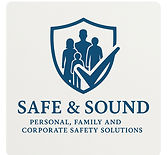


Choking Recognition & Response Training for Restaurant Employees.

Free Special Event!!
Thursday December 18
2025. Register Below
Corporate and Personal Safety Solutions and Training for Today's World
School Safety Training. Teaching our children to be safe in and out of school

Safety Academy USA
100 Cummings Center #212E
Beverly Ma 01915*978-993-3337
1. Get to know the campus safety office
Every school has a campus safety or security office—part of your tuition funds it.
Make the most of this resource. Your college’s website likely provides information like office hours, contact methods, and a plethora of online safety resources.
Next steps:
-
Call or email your campus safety office and request information about their programs.
-
Find out if your campus has the following services and how you can take advantage of them:
-
Blue light emergency phone stations
-
Campus escort services
-
Safety maps with suggested secure routes
-
Support for a safety app like Campus Safe
-
-
Check out your school’s campus safety report. All colleges and universities are required to file an annual report that details a campus safety plan, emergency procedures, and the most recent crime statistics.
2.Take precautions after dark
It’s no secret that a lot of criminals prefer the cover of darkness to the stark light of day. That’s no different on a college campus.
We don’t want you to feel like danger is lurking around every corner, but it’s smart to minimize risks.
Walking alone, parking in a poorly-lit area, or exploring new spots on campus are all actions that come with higher risk at night.
-
Use the buddy system when walking at night.
-
Call campus security for a ride if you have to travel on your own, or if you’re under the influence.
-
Park in a lighted area or highly-trafficked lot if you know you won’t return until after the sun sets.
-
Know where you’re going before you head out.
-
3. Keep things on lockdown
This is one of those annoying things parents like to nag about, but we agree with Mom and Dad on this one.
Don’t leave your dorm or apartment without locking up—no matter how quickly you plan to return. And don’t stop there; you can lock up everything from your laptop to your mini fridge.
-
If you live on the first floor, make it your practice to close and lock your windows—the same goes for first-floor doors and windows in a shared house or apartment.
-
Keep blinds and curtains closed. No reason to give thieves a front-row seat to your goods.
-
Add a contact sensor to drawers, the closet door, or the mini-fridge. When greedy paws open your stuff, you’ll get an alert or trigger an alarm, depending on the setup you pick.
-
Pick up a laptop lock to make sure your term paper doesn’t walk away while you grab a snack.
-
Use a small safe to keep your valuables protected from well-meaning roomies or unexpected “guests.”
4. Be smart on social media
Let’s face it—you’re going to be on social media. And it’s a great way to keep all of your loving (slightly annoying?) family members up-to-date while you’re hitting the books.
But social media is also a window into your habits and movements. You don’t want to give scammers, hackers, or potential stalkers a sneak peek at where you go and when your dorm or apartment is empty.
Be thoughtful about what (and when) you post, and use these tips to tighten up your social media security.
-
Don’t geotag your photos—it reveals your location to strangers.
-
Don’t publicly announce when you’re home alone or are leaving your home unattended.
-
Review the settings on each of your social media profiles. Set your posts (especially photos) to private or limit access to your approved connections and friends.
-
Disable location services to avoid accidentally revealing where you are when you post a picture of that beautiful burrito you snagged for lunch.
-
Don’t stay logged in to your social media accounts—that leaves you vulnerable to hackers if you lose your phone or laptop.
5. Be careful getting into your car
Now that you’re (hopefully) parked in a well-lit, public parking lot, it’s time to take safety measures once you get to your car.
Most people don’t think to look in their backseat or under the car before getting behind the wheel. A predator could potentially be hiding in one of those locations—especially if you tend to leave your car unlocked or keep your windows rolled down (don’t do that!).
To help you avoid a scary run-in, we asked safety expert Pete Canavan for his top car safety tips.
-
Have your keys or key fob ready well before you reach your vehicle. You don’t want to fumble with your keys under duress if someone is fast approaching you.
-
Look around your vehicle and vehicles parked next to you. Check out all sides so you can see if there’s someone sitting alone, loitering, or hiding near your car.
-
Don’t multitask when you’re heading to the car. If you grabbed cash from the ATM or have a sudden hankering for the last mint at the bottom of your bag, wait until you’re safely inside your car. Distraction isn’t your friend when it comes to safety.
-
Never leave valuables in plain sight. Items like backpacks, purses, laptop cases, or packages should be covered or put in your trunk. Even better, take high-value items with you.
6. Have a plan
Whenever you head out, make sure you know where you’re going and how to get there.
A little planning can keep you out of harm’s way so you can enjoy exploring the campus or heading into town.
-
Walk with confidence and avoid looking confused, even when you’re trying to navigate a new location.
-
Make arrangements to get home safely if you’re going to a party.
-
Don’t use headphones or bury your nose in your phone—especially if you’re unsure about where you’re going.
-
Download your campus map and use GPS to find popular, highly trafficked routes to get to your destination.
-
Avoid walking along deserted paths. When in doubt, stick to the routes you know best—even if they take a little longer.
7. Pay attention to crime rates and trends
It’s always smart to stay informed. Looking at local crime rates can give you an idea of what types of crimes are most common and whether or not crime is increasing or decreasing year over year.
Campus crime statistics are reported every year in compliance with the Clery Act. Clery Act reporting goes beyond the usual crimes. You can find out about things like fire safety in residential housing, drug- and alcohol-related incidents on campus, and hate crimes.
But crime rates and statistics are just one way to try to gauge how safe your school, dorm, or neighborhood is.
Other things to explore include:
-
Community safety initiatives
-
Public safety and community services funding
-
Safety resources like bike lanes and adequate street lighting
-
Healthcare resources (medical, behavioral, and mental)
-
Expanded bus or shuttle schedules
8. Learn how to defend yourself
We believe in proactive security measures, and self defense is about as proactive as you can get.
On top of being able to protect yourself if you need to, simply knowing that you can goes a long way—especially if you live alone or regularly move around campus by yourself.
Having some self-defense skills will also boost your confidence and self-esteem, which can go a long way toward protecting yourself.
-
Pay attention to the people, environment, and objects around you at all times.
-
Don't ignore something that gives you reason to be suspicious. Your "gut" is rarely wrong.
-
Keep your personal boundaries in mind. If a situation progresses beyond a certain point and someone crosses the line, you may need to defend yourself.
-
9. Stock up on safety supplies
Keeping a few safety supplies on hand can help you feel more protected. Self-defense products like pepper spray are legal in all 50 states .
Many colleges also hand out whistles to new students, which you can use to sound the alarm if you need help or are in danger.
“Most people don’t leave their home without their cell phone, so the first thing you should do is download a safety app and familiarize yourself with it. Program in your emergency contacts and know how to use the program before you need to.”
Next steps:
-
Keep your supplies compact and within reach. Pack safety supplies into a small kit, and fasten the kit on a key ring, lanyard, or backpack.
-
Gear up
-
Personal safety devices come in all shapes and sizes. Whether it’s a personal alarm or Pepper Spray find a device you feel comfortable and confident using.
-
10 Talk to Professionals
While your friends and family want to help keep you safe. Always talk to Security Professionals about legalities and training options that ar available in the state you are attending school in.


